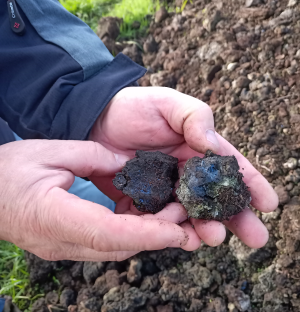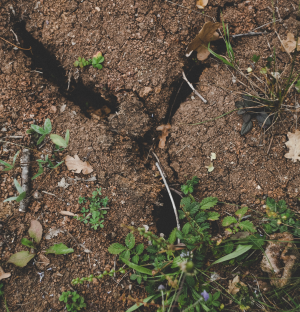Technology
We understand by this slogan a synergy of natural sciences and smart solutions that are focused on the benefit of humans and the good of the native land.
Home › Technology
The basis of our organo-mineral compositions, regulators, growth correctors and soil improvers is a mixture of lowland peat and sapropel. Lowland peat is a biologically active environment, which in combination with sapropel, neutralizes and corrects excessive soil acidity, is the best natural remedy for depleted and polluted soils, and improves the fertility of any soil.
Sapropel and lowland peat are a natural source of humic and fulvic acids. These acids have proven their high ability to influence soil metabolic processes, releasing physiologically active substances and nutrients into the soil substrate, contributing to the biocenosis and more intensive development of the soil microbiota.



Humic substances better the structure and water-holding capacity of the soil, its buffering capacity, preventing the complete decomposition of organic residues into a simple solution of chemical elements.



The general principles for obtaining humic substances, discovered more than 200 years ago, have not changed so far. But there are significant differences between humates and humic substances, their efficiency, manufacturability, safety, content of additional impurities and ballast inclusions, depending on the production technology and raw materials from which they are obtained.
It is the raw materials – lowland peat and sapropel from bottom deep sediments of clean lakes, that are the key component of our preparations. But that’s not all. All humic substances are characterized by a changeable and varied chemical composition, even when extracted from one site.
With the help of high-tech equipment, we apply deep physical and chemical processing of raw materials, acting over molecular structure of sapropel by dispersion and extraction methods, in order to isolate easily hydrolysable compounds, bioactive complexes and amino acids, and also decompose our raw materials into macro-quantitative and microelements. Innovative production processes let us achieve the best chelated organic and semi-organic compounds, activate or slow down certain bioactive bonds for a prolonged effect in soils or plants, work with small (low molecular weight) substances and high molecular weight complexes for their subsequent combination with each other and with minerals.
Thus, we ensure a stable content of humic and fulvic acids, depending on the purpose of each product, whether it’s aeration of humus, improvement of depleted fields, targeted feeding of exhausted soils, binding pesticide residues, radionuclides and heavy metals into insoluble complexes to cut down stress on farmland, as well as root system development and resistance of plants to external adverse factors, improvement of flowering, ovary and fruiting of crops, preservation of neutral microflora until the next sowing or addition to animal and poultry feed.
Our products are eco-friendly, have zero toxic waste, do not have an active pathogenic environment, unlike most organic fertilizers, but retain biologically active micro and macro elements necessary to preserve and improve the fertile layer of the earth
Fertilizers with peat-sapropel mixtures and organo-mineral fertilizers and top dressings contribute to the gradual assimilation of nutrients, prevent soil degradation due to oversaturation by mineral fertilizers.






In intensive crop production, the priority of high yields dominates, which even in the short term causes damage to the fertile layer of the earth, because industrial mineralization leads to lower levels of organic matter in soils.
Our fertilizers combine the principles of sustainable development with the latest advances in high-tech production methods and spot application.
The organic microbiota of sapropel and lowland peat improves porosity, water retention, permeability and stimulates the own microbial flora of the soil, resulting in the conversion of soil compounds into nutrients available to crops. SatoHum® products expand the efficiency of applying mineral fertilizers and reduce the quantitative need for mineral fertilizers.
Unlike classic organic fertilizers – compost, vermiculite, bokashi, manure – in a peat-sapropel mixture, the degree of decomposition of natural organisms is deeper, therefore, such mixtures and derivative fertilizers cannot be a source of pathogens, but, on the contrary, are characterized by bactericidal properties. Peat and sapropel are stored for more than 2 seasons without special conditions and without changing their structure.



Compost, manure, vermiculite require a special collection and storage technology to bring their best qualities to the soil. Our peat-sapropel mixtures have functional advantages in improving the microbiota of the fertile soil layer, show stable reproducible results, which is difficult to achieve with organic fertilizers, and prevent soil decompaction and acidification.
In combination with compost, manure, chicken droppings and other industrial waste, our mixtures have a neutralizing effect on the high bioactivity of organic fertilizers and prevent the entering of weed and grass seeds contained in organic fertilizers.



As you know, organo-mineral fertilizers based on peat-sapropel mixture are rich in humic and fulvic acids, which contribute to the restoration of polluted, eroded and depleted soils.
Humic substances and complex thermodynamic and bioactive complexes of certain enzymes can be formed only in sapropel and have no analogues in wildlife.
By no means all organo-mineral fertilizers contain humic and organic substances in sufficient quantities. To obtain effective humic extracts and fulvic acids, it’s important to use specific raw materials that guarantee their agronomic activity and the minimum effective content in preparations. Such raw materials should give the so-called inherited humin, which is firmly held in soil aggregates and is difficult to biodegrade, which is valuable for restoring and maintaining the fertile layer.
SatoHum® has developed lines of specific products for restoration, enrichment and maintenance of the fertile layer of land for private, ecological and intensive farming, professional lawns, landscape plantings, flower beds, garden and horticultural crops.
The average efficiency of applying our fertilizers in the experimental fields of intensive crop production showed a result of 18 to 22% after the first year of application. When farming according to the No-Till system, a single application of our fertilizers under crop residues with mulch and/or during sowing diminishes the pathogenicity of the upper layer (neutralizes fungi, viruses and bacteria) and restrains the accumulation of lye in the process of green manure nitrification.
How can we help you?
Solutions
Land revegetation, preservation of fertility, solutions for the urban green environment and professional lawns.
More